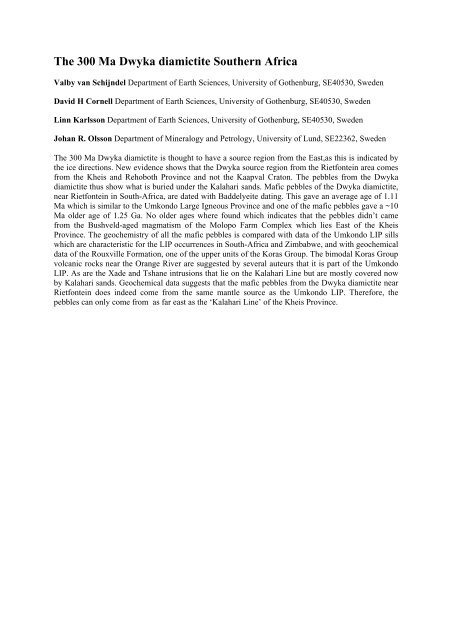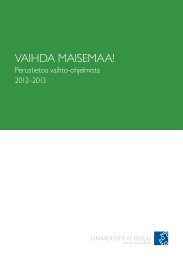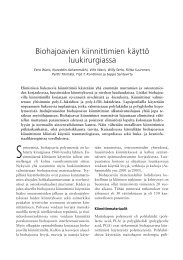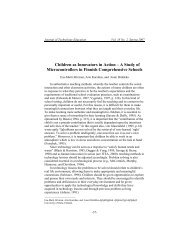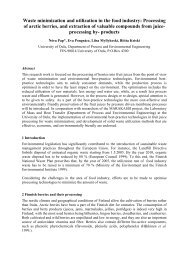Meeting programme - Oulu
Meeting programme - Oulu
Meeting programme - Oulu
You also want an ePaper? Increase the reach of your titles
YUMPU automatically turns print PDFs into web optimized ePapers that Google loves.
The 300 Ma Dwyka diamictite Southern Africa<br />
Valby van Schijndel Department of Earth Sciences, University of Gothenburg, SE40530, Sweden<br />
David H Cornell Department of Earth Sciences, University of Gothenburg, SE40530, Sweden<br />
Linn Karlsson Department of Earth Sciences, University of Gothenburg, SE40530, Sweden<br />
Johan R. Olsson Department of Mineralogy and Petrology, University of Lund, SE22362, Sweden<br />
The 300 Ma Dwyka diamictite is thought to have a source region from the East,as this is indicated by<br />
the ice directions. New evidence shows that the Dwyka source region from the Rietfontein area comes<br />
from the Kheis and Rehoboth Province and not the Kaapval Craton. The pebbles from the Dwyka<br />
diamictite thus show what is buried under the Kalahari sands. Mafic pebbles of the Dwyka diamictite,<br />
near Rietfontein in South-Africa, are dated with Baddelyeite dating. This gave an average age of 1.11<br />
Ma which is similar to the Umkondo Large Igneous Province and one of the mafic pebbles gave a ~10<br />
Ma older age of 1.25 Ga. No older ages where found which indicates that the pebbles didn’t came<br />
from the Bushveld-aged magmatism of the Molopo Farm Complex which lies East of the Kheis<br />
Province. The geochemistry of all the mafic pebbles is compared with data of the Umkondo LIP sills<br />
which are characteristic for the LIP occurrences in South-Africa and Zimbabwe, and with geochemical<br />
data of the Rouxville Formation, one of the upper units of the Koras Group. The bimodal Koras Group<br />
volcanic rocks near the Orange River are suggested by several auteurs that it is part of the Umkondo<br />
LIP. As are the Xade and Tshane intrusions that lie on the Kalahari Line but are mostly covered now<br />
by Kalahari sands. Geochemical data suggests that the mafic pebbles from the Dwyka diamictite near<br />
Rietfontein does indeed come from the same mantle source as the Umkondo LIP. Therefore, the<br />
pebbles can only come from as far east as the ‘Kalahari Line’ of the Kheis Province.


